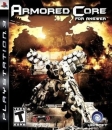| WiteoutKing said: My point was that Magic the Gathering was the only card game that became truly successful that had no ties to already popular franchises. And I can say with absolute certainty this will never catch up to MtG's popularity. This is a tic-tac-toe card game with a flashy look. |
where are you getting the tic-tac-toe game play? its far from tic-tac-toe. No it wont catch MtG but since its made my Wizards of the Coast it does have a chance to become popular.
How to play:Through use of an included "9 Fields" table mat featuring 3x3 rectangular grid, and special trading cards encrypted with CyberCode matrix code;[10] players conquer a playfield by employing various creatures and spells, taking turns playing cards of their choice strategically on the mat, and performing actions through gestures that are captured through the PlayStation Eye camera, which is mounted on a special stand (also included with the game). The first player to occupy five spaces (more than half the field) wins the match.[11]
On each turn, players can move a card, changing its position and/or orientation. The cards are divided into two main classes: creature cards and spell cards. When a creature card is held face-up in front of the camera, the creature is "summoned", and displayed perched on top of the card. Creatures have different offensive and defensive levels depending on their orientation on the field, and are more vulnerable to attacks from the side or behind.[12] During an attack, the view switches from the field view to a "battle mode", in which the two battling creatures are shown battling. Spell cards can be used to attack other creatures, or claim[11] or cause an effect on a space.[12]
Each of the nine fields, as well as most cards, are categorized by one of five elements. The elements are fire, water, earth, wood, and Biolith. The center field is always Biolith, and the PS3 chooses the elements of the other 8 fields at random. Fire and water are opposing elements, as are earth and wood. Creatures played on a field that corresponds to their element, such as a fire creature on a fire field, get an automatic bonus of +2 points to life, making them significantly tougher to kill. Creatures played on a field of their opposite element automatically lose 2 points of life, giving them a serious disadvantage. [13] In fact, if a creature with 2 life points or less is played on its opposite element, it immediately dies. Biolith cards are neutral, and gain no bonus or penalty to life by being placed on any field. Each of the nine fields has a second element associated with it. This element is partially revealed on the edge of the field. That second element becomes active when certain cards cause the field to be "flipped". The original element then becomes inactive. It is not uncommon for the second element to be the original element's opposite.
Most actions in the game cost "mana". This includes summoning creatures, casting spells, attacking, and rotating a friendly creature that is in play. At the beginning of each player's turn, they gain 2 points of mana. If a creature is killed, it is moved to the discard pile and its owner gains 1 point of mana.[13] There are other cards in the game that allow a player to gain mana in various ways.
Source: http://en.wikipedia.org/wiki/The_Eye_of_Judgment
Tic-Tac-Toe? I dont think so.... nub.























